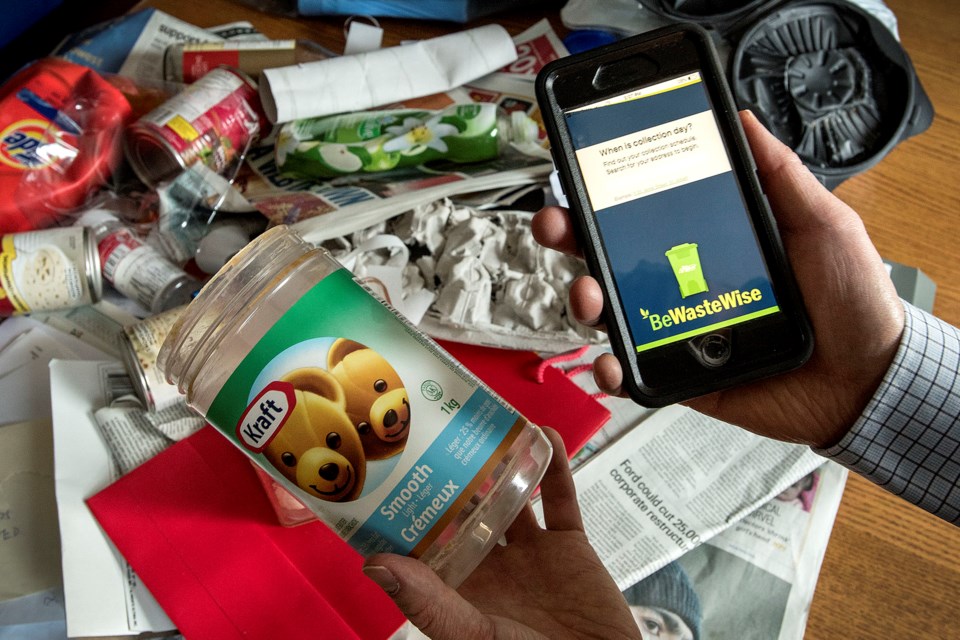Changes to St. Albert’s recycling program are putting a dent in the amount of waste diverted from the dump.
Last year, the city’s overall diversion rate was at 60 per cent, down from the 2013 to 2018 average of 65.4. The biggest drop came after the city changed what could be recycled: in the fourth quarter, the diversion rate fell to 57 per cent, compared to 64 per cent for the same quarter of 2017.
Diversion is a figure measured in metric tonnes, based on the weight of items not being tossed in the landfill and instead being placed in the green organics bin or a blue recycling bag. St. Albert’s 2014 Environmental Master Plan aimed to increase the city’s waste diversion rate to 75 per cent by 2020.Global changes to recycling have had an impact on residents’ ability to recycle, according to St. Albert’s 2018 annual corporate report, released last month.
In response to these global market changes – related to foreign countries such as China refusing to accept our recyclables anymore – St. Albert created new restrictions for its recycling program, beginning in November. Items that are now prohibited from the blue bag include glass bottles and jars, spiral wound cardboard, single serve coffee cups and plastic clamshell containers.
Waste and diversion programs supervisor Olivia Kwok said when the changes were instituted, city staff started leaving behind bags on the curb that contained unacceptable material.
“A lot of the weight changed there because people had to resort the materials, and we only wanted to take things that were acceptable,” she said.
Kwok said it is hard to tell how changes to the city’s recycling program will impact the diversion rate into the future, because the materials people are generating at home are changing.
“Obviously the recycling weight is going to be different than last year because we took materials out at the end of 2018, so less stuff will go in that stream, however people are making different changes,” Kwok said.
The conversation around recycling is starting to change and people are becoming more aware of and asking questions about their buying and consumer habits, she said.
Recycling Council of Alberta executive director Christina Siedel said the council is concerned about diversion rates in Alberta, mostly relating to the reputation of recycling and diversion.
Issues that have existed in recycling programs are now coming to light, and Seidel said there is a risk of people throwing their hands in the air and giving up entirely on recycling and diverting waste.
“We don’t want that to create a situation where people just give up on diversion,” she said. “Because there is light at the end of this tunnel, and the long-term situation is very positive, it’s just we’re going to go over many more bumps in the meantime.”




